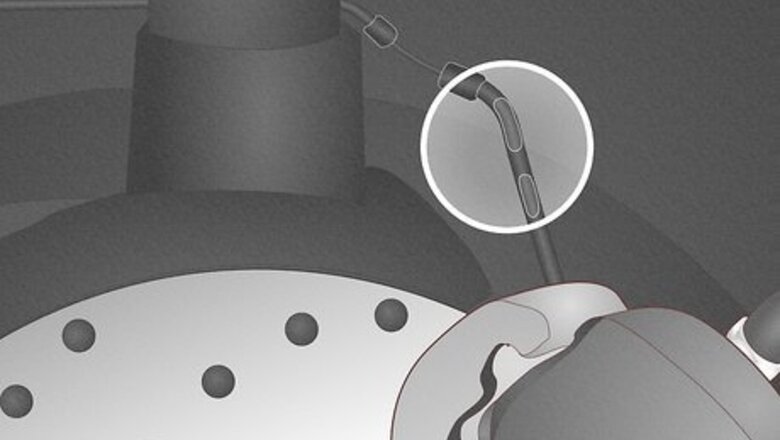
views
- Air gets into brakes when they’ve become contaminated with water, the brake pads wear out, or the system has a leak.
- When there’s air in your brakes the brake pedal can be unresponsive, feel spongy, or even fall to the floor.
- Always get your brakes repaired by a professional mechanic.
Can you get air out of brakes without bleeding them?
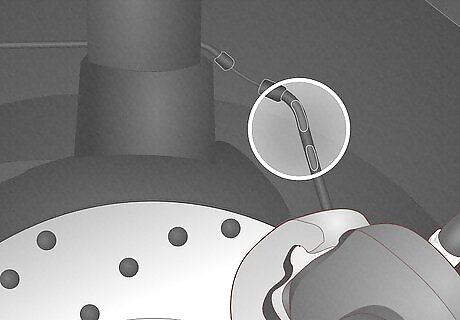
To get air out of brake lines, they have to be bled. As your brake system ages, air can enter the brakes and make them unresponsive. The only way to get the air out is to “bleed” your brakes, or flush new fluid through your car’s braking system. Without opening the system and bleeding it, trapped air has nowhere to go. You need to get your brakes bled whenever any part of your brake system is getting replaced, the brakes become unresponsive, or you find any leaks.
How does air get into brakes?

The fluid level gets too low in the master cylinder. As your brake pads (that come in contact with your wheel) get worn out, it takes more fluid to compress them. This causes the brake fluid reservoir in the master cylinder to empty. If the fill level isn’t maintained, the air that gets in when you open the cap can get pressed into the brakes. Brakes work by putting pressure on brake fluid (an incompressible, hydraulic fluid) in the master cylinder, which is then transferred through the braking system to the brake pads, which stop your wheel.
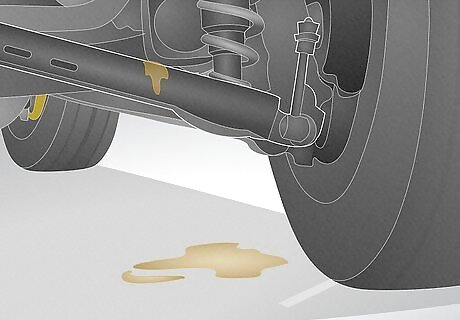
There are leaks in the system. If your fluid level is very low, you may have a leak. Check your brakes for leaks by looking under your car for drips, or filling up your master cylinder and waiting a few hours to see if it drains. Check around the master cylinder, brake line seals, and all around the caliper for caked dirt, which can indicate a leak. The caliper is the mechanism around the wheel that houses the brake pads. It’s linked to the master cylinder through a system of tubes and hoses, so check each connection for a leak. The master cylinder is a large reservoir at the back of the engine compartment, usually on the driver’s hand side. You can get air in your brakes just by opening the master cylinder at an inopportune time, so consider just taking the car to a shop.

The brakes are contaminated by water. Brake fluid is hygroscopic, which means it absorbs moisture, even through seals and caps. When the brake fluid boils down at the wheels (which can get very hot), the water turns into gaseous vapor, which lowers the pressure. Water in the lines also leads to corrosion anywhere that touches brake fluid, so it needs to be dealt with ASAP. Use a copper test strip to check for water in your lines.
Signs Your Brakes Need to Be Bled

They’re spongy and unresponsive. Air is much easier to compress than liquid, so when you press the brake, pressure transfers into the air pocket and not into the braking mechanism. If you press your brake pedal and it feels spongy or takes awhile to start braking, that can indicate that you have air in the lines.
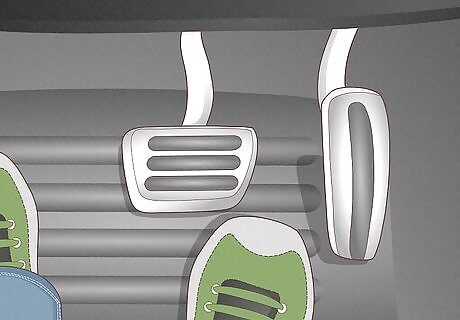
The pedal’s on the floor. If you pressed on the brakes and they never came back up, that’s a good sign that you have a lot of air trapped in there. If your pedal has no tension in it at all, your best bet is to get it towed to a garage.
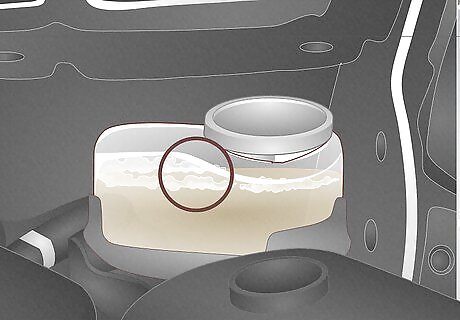
There’s foam in the master cylinder To test for this, top off the brake fluid reservoir on the master cylinder (a cylindrical tank on the back wall of the driver’s side of the engine compartment). Pump the brakes, and if foam appears on the surface, there’s air in the lines. Doing this test incorrectly can cause your brakes to get even worse. If you’re not totally sure of what you’re doing, take your car to a mechanic to get it checked out. Completely clean the top of the cylinder before you open it. If any dirt or debris gets into the reservoir it could mess your brakes up even further.
How to Bleed Brakes Without Special Equipment
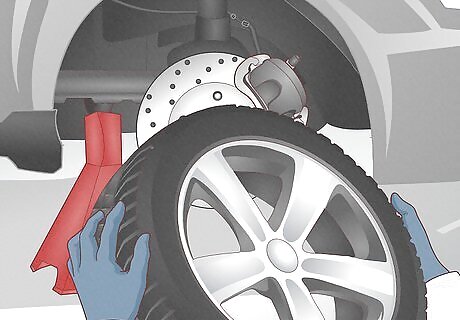
Remove the tires and put on safety gear. Hoist your car up on a jack and take your tires off. Brake fluid is very caustic, so put on gloves and long sleeves. Gather some rags for spills, too.
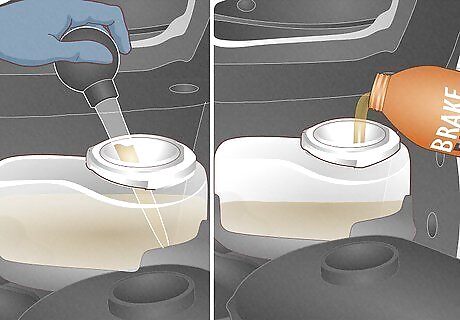
Change the fluid in the master cylinder reservoir. Pop the hood and look in the very back of the engine compartment for the master cylinder. Clean the top of the reservoir cap, then open it and siphon out the brake fluid with a turkey baster until it’s half empty. Fill the cylinder the rest of the way up with new brake fluid and leave the cap off. The master cylinder is attached directly to the firewall (back wall) if you have manual brakes, and attached to a brake booster, which is attached to the firewall for automatic brakes. Never let the reservoir get below the “min fill” line. Check the lid of the reservoir or your owner’s manual to find out which kind of brake fluid you need. You can only substitute Dot 4 brake fluid for Dot 3. All other systems require their specific fluids. The amount of fluid you need will depend on the size of your master cylinder. 1 liter is enough for .6 liter reservoirs.
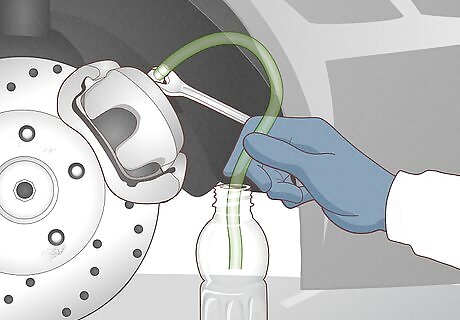
Prep the furthest wheel from the master cylinder for bleeding. Locate the furthest wheel by following your brake lines. Use the closed end of a box wrench to unscrew the bleeder screw at the top of the caliper a half turn. Attach a clear hose to it, then put the other end of the hose into a bottle with enough brake fluid in it to cover the opening. In most cars, the tire bleed order is right rear, left rear, right front, left front. If you see two sets of brake lines going to the back, start with the rear right tire. If there’s only one, start with the left. The bleeder screw may have a black cap over it. Some cars have two bleeder screws on each caliper. If that’s the case, bleed the inner one or the lower one first, then the outer or upper. Drum brakes, which are less common, have their bleeder screws on the top rear backing plate. Bleeding your brakes in the wrong order can end up making the problem worse. Once again, consider going to a mechanic, instead.
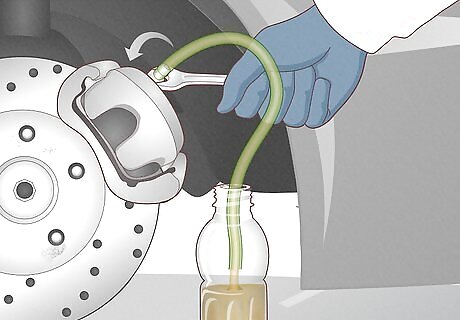
Unscrew the bleeder screw the rest of the way. Fully open the screw. The old brake fluid will slowly pour out into the bottle. Wait until the brake fluid looks clean and has no bubbles to retighten the screw. Take off the tubing and replace the cap when you’re done. Brake fluid is golden yellow when it’s fresh, and slowly becomes browner over time. Immediately wipe up any spills. Brake fluid is caustic and can act like paint thinner.

Refill your master cylinder and repeat the process. Go back to the master cylinder and refill it to the max line. If it ever runs dry it’ll flood your lines with air and make the issue worse. Repeat the process for each wheel, starting with the other back wheel and then moving to the right and left front ones. Refill the master cylinder between each bleeding. This method is called “gravity bleeding” and can be done with just one person. Another popular way to bleed your brakes is done by having one person step on the brake pedal while another opens the bleed screws.
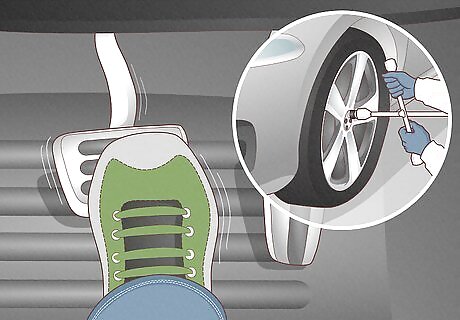
Check your brakes before putting on your tires. Press the brakes a few times to check them for sponginess. If they have adequate give, they should be good to go. If your brakes start to feel spongy or unresponsive again, take your car to a mechanic to have the brakes checked out.














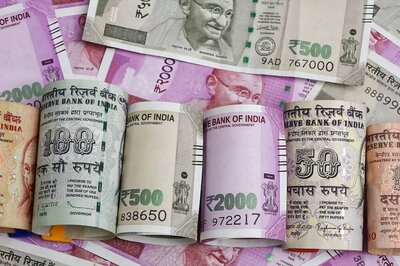



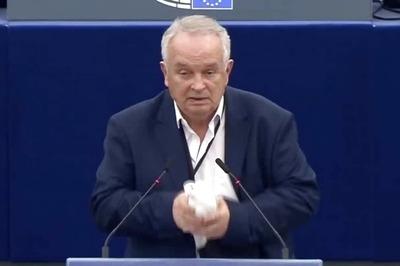
Comments
0 comment